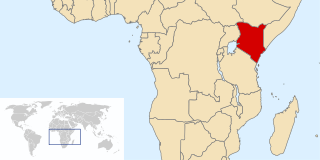
Poultry are domesticated birds kept by humans for the purpose of harvesting animal products such as meat, eggs or feathers. The practice of raising poultry is known as poultry farming. These birds are most typically members of the superorder Galloanserae (fowl), especially the order Galliformes. The term also includes waterfowls of the family Anatidae but does not include wild birds hunted for food known as game or quarry.

Avian influenza, also known as avian flu or bird flu, is a disease caused by the influenza A virus, which primarily affects birds but can sometimes affect mammals including humans. Wild aquatic birds are the primary host of the influenza A virus, which is enzootic in many bird populations.

Breed broiler is any chicken that is bred and raised specifically for meat production. Most commercial broilers reach slaughter weight between four and six weeks of age, although slower growing breeds reach slaughter weight at approximately 14 weeks of age. Typical broilers have white feathers and yellowish skin. Broiler or sometimes broiler-fryer is also used sometimes to refer specifically to younger chickens under 2.0 kilograms, as compared with the larger roasters.

Influenza A virus subtype H5N1 (A/H5N1) is a subtype of the influenza A virus, which causes influenza (flu), predominantly in birds. It is enzootic in many bird populations, and also panzootic. A/H5N1 virus can also infect mammals that have been exposed to infected birds; in these cases, symptoms are frequently severe or fatal.
Marek's disease is a highly contagious viral neoplastic disease in chickens. It is named after József Marek, a Hungarian veterinarian who described it in 1907. Marek's disease is caused by an alphaherpesvirus known as "Marek's disease virus" (MDV) or Gallid alphaherpesvirus 2 (GaHV-2). The disease is characterized by the presence of T cell lymphoma as well as infiltration of nerves and organs by lymphocytes. Viruses related to MDV appear to be benign and can be used as vaccine strains to prevent Marek's disease. For example, the related herpesvirus found in turkeys (HVT), causes no apparent disease in the birds, and continues to be used as a vaccine strain for prevention of Marek's disease.

Hock burns are lesions found on the hock joints of chickens and other birds raised on broiler farms. They are considered a form of contact dermatitis. These marks occur when the ammonia from the waste of other birds burns through the skin of the leg, leaving a brown ulcer mark. The condition has been found to be a source of pain for birds, can cause mobility issues, and may increase the risk of bacterial diseases. In severe cases, hock burns can cause visible scabs to form.

Influenza A virus subtype H9N2 (A/H9N2) is a subtype of the species Influenza A virus . Since 1998 a total of 86 cases of human infection with H9N2 viruses have been reported.

Influenza A virus subtype H7N2 (A/H7N2) is a subtype of the species Influenza A virus. This subtype is one of several sometimes called bird flu virus. H7N2 is considered a low pathogenicity avian influenza (LPAI) virus. With this in mind, H5 & H7 influenza viruses can re-assort into the Highly Pathogenic variant if conditions are favorable.

H5N8 is a subtype of the influenza A virus and is highly lethal to wild birds and poultry. H5N8 is typically not associated with humans. However, seven people in Russia were found to be infected in 2021, becoming the first documented human cases.

The social impact of H5N1 is the effect or influence of H5N1 in human society.
The U.S. Poultry & Egg Association is an American industry trade group located in Tucker, Georgia that "represents its poultry and egg members through research, education, communications and technical services."

Chicken is the most common type of poultry in the world. Owing to the relative ease and low cost of raising chickens—in comparison to mammals such as cattle or hogs—chicken meat and chicken eggs have become prevalent in numerous cuisines.

Fujian flu refers to flu caused by either a Fujian human flu strain of the H3N2 subtype of the Influenza A virus or a Fujian bird flu strain of the H5N1 subtype of the Influenza A virus. These strains are named after Fujian, a coastal province in Southeast China.

Poultry farming is the form of animal husbandry which raises domesticated birds such as chickens, ducks, turkeys and geese to produce meat or eggs for food. Poultry – mostly chickens –

Poultry farming is a part of the United States's agricultural economy.

Chicken eggs are graded by size, for the purpose of sales. The egg shell constitutes 8–9% of the weight of the egg.

The broiler industry is the process by which broiler chickens are reared and prepared for meat consumption. Worldwide, in 2005 production was 71,851,000 tonnes. From 1985 to 2005, the broiler industry grew by 158%.

Poultry farming in Kenya is a widespread occupation. It is mostly practiced on a small-scale, and predominantly for domestic consumption.
Poultry farming in Bangladesh is the process of keeping various types of birds for meat, egg, feather, or sale. In Bangladesh, poultry birds are primarily used for meat and egg consumption.
Antibiotic use in the United States poultry farming industry is the controversial prophylactic use of antibiotics in the country's poultry farming industry. It differs from the common practice in Europe, where antibiotics for growth promotion were disallowed in the 1950s.











